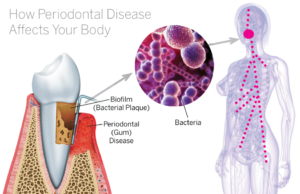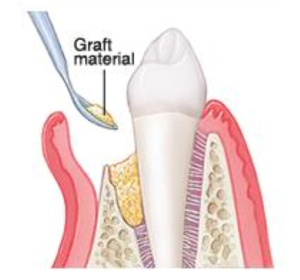 Necrotizing Gingivitis
Necrotizing Gingivitis
Necrotizing gingivitis lesions are characterized by the presence of ulcers within gingival connective tissue, surrounded by a non-specific acute inflammatory infiltrate.
Necrotizing gingivitis is an acute inflammatory process of the gingival tissues characterized by presence of necrosis/ulcer of the interdental papillae, gingival bleeding, and pain. Other signs/symptoms associated with this condition may include halitosis, pseudomembranes, regional lymphadenopathy, fever, and sialorrhea (in children).
Necrotizing Periodontitis
Necrotizing Periodontitis is an inflammatory process of the periodontium characterized by presence of necrosis/ulcer of the interdental papillae, gingival bleeding, halitosis, pain, and rapid bone loss. Other signs/symptoms associated with this condition may include pseudomembrane formation, lymphadenopathy, and fever.
Necrotizing periodontal diseases are strongly associated with impairment of the host immune system, as follows: (1) in chronically, severely compromised patients (e.g., AIDS patients, children suffering from severe malnourishment, extreme living conditions, or severe infections) and may constitute a severe or even life-threating condition; and (2) in temporarily and/or moderately compromised patients (e.g., in smokers or psycho-socially stressed adult patients).
Necrotizing Stomatitis
Necrotizing stomatitis is a severe inflammatory condition of the periodontium and the oral cavity in which soft tis- sue necrosis extends beyond the gingiva and bone denudation may occur through the alveolar mucosa, with larger areas of osteitis and formation of bone sequestrum. It typically occurs in severely systemically compromised patients. Atypical cases have also been reported, in which necrotizing stomatitis may develop without prior appearance of necrotizing gingivitis/periodontitis lesions.


 Necrotizing Gingivitis
Necrotizing Gingivitis Periodontitis as a manifestation of systemic disease
Periodontitis as a manifestation of systemic disease 







